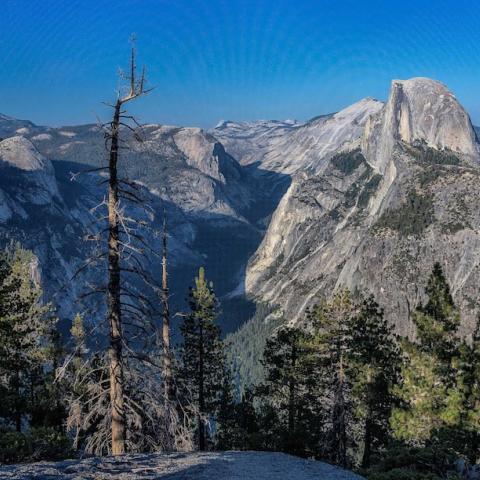
The U.S. Fish and Wildlife Service has announced a reopening of its past decision to deny Endangered Species Act protections for wolverines in the Lower 48 states/USFWS, Roy Anderson
Six months after a federal judge ruled that the U.S. Fish and Wildlife Service erred in its decision to deny Endangered Species Act protections for wolverines, the agency is reconsidering the matter and revisiting a past proposal to give the small predator a "threatened" designation under the act.
In reopening the matter, the U.S. Fish and Wildlife Service said it would accept through November 17 public comments on its 2013 proposal to list wolverines as a threatened species in the Lower 48 states.
In April, U.S. District Judge Dana Christensen held that the wildlife agency erred when it decided in 2014 to reverse course and not bestow the designation. In his ruling, the judge cited the agency's decision not to fully considering climate-change impacts and genetic isolation when it decided wolverines did not need ESA protection. Judge Christensen agreed with conservation groups and individuals that "the Service ignored the best available science by demanding better science" when it came to climate change and the impact warmer winters would have on the species.
After recounting the biological needs of wolverines, calling the species "a relic of the Northern Hemisphere's last Ice Age, and it survives in very low numbers in those limited areas in the contiguous United States where ice age-like conditions persist," the judge agreed with the plaintiffs that "(T)he wolverines' sensitivity to climate change, in general, cannot really be questioned. In fact, many believe, similar to the polar bear, that the wolverine may serve as a land-based indicator of global warming."
And while he said that alone doesn't merit the species for ESA listing, as he went into detail on the case he reached the conclusion that the Fish and Wildlife Service had indeed erred in determining the wolverine did not deserve listing and ordered the agency to re-examine the issue.
In February 2013, the Fish and Wildlife Service proposed to list the wolverine as a threatened species after the agency's biologists concluded global warming was reducing the deep spring snowpack pregnant females require for denning. But, according to the conservation groups at the time, "after state wildlife managers in Montana, Idaho and Wyoming objected, arguing that computer models about climate change impact are too uncertain to justify the proposed listing," Noreen Walsh, director of the agency's Mountain-Prairie Region, which includes Wyoming and Montana, ordered her agency to withdraw the listing. The reversal came despite confirmation by a panel of outside experts that deep snow is crucial to the ability of wolverines to reproduce successfully, the groups said.
In dismissing arguments that climate change might adversely impact wolverines, Fish and Wildlife Service officials claimed that future predictions of snowpack decline "were too coarse," and because not enough is known about why wolverines den in deep snow.
Wolverines have been spotted in Denali National Park, Yosemite National Park, Yellowstone National Park, Grand Teton National Park, Glacier National Park, and North Cascades National Park, among others. It's difficult to say just how many wolverines are wandering around the parks. Their extensive travels, sneaky scavenger-like maneuvering, and solo dwelling make it difficult for researchers to closely monitor their patterns.




 Support Essential Coverage of Essential Places
Support Essential Coverage of Essential Places







Comments
Good news. Thanks for the update.
Glad there are groups that challenge these type of decisions to make sure we protect the wildlife that needs protection. Thanks for the story.
I was lucky and privileged to spot a wolverine crossing the road one winter night at Mount Rainier forty years ago. Here's some interesting links to Gulo gulo news in the Washington Cascades, where the estimated current population is 20-25 individuals.
Goat Rocks Wilderness, southeast of Mount Rainier, 2016:
http://cascadescarnivoreproject.blogspot.com/2016/07/2nd-wolverine-detec...
Central WA Cascades, 2015:
http://www.conservationnw.org/news/updates/cascades-wolverine-population...
Lots of links to WA wolverine research
Seattle Times, 2013:
http://www.seattletimes.com/seattle-news/once-extinct-here-wolverines-on...
Thanks for those links, tahoma. Good reads.